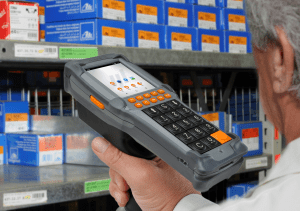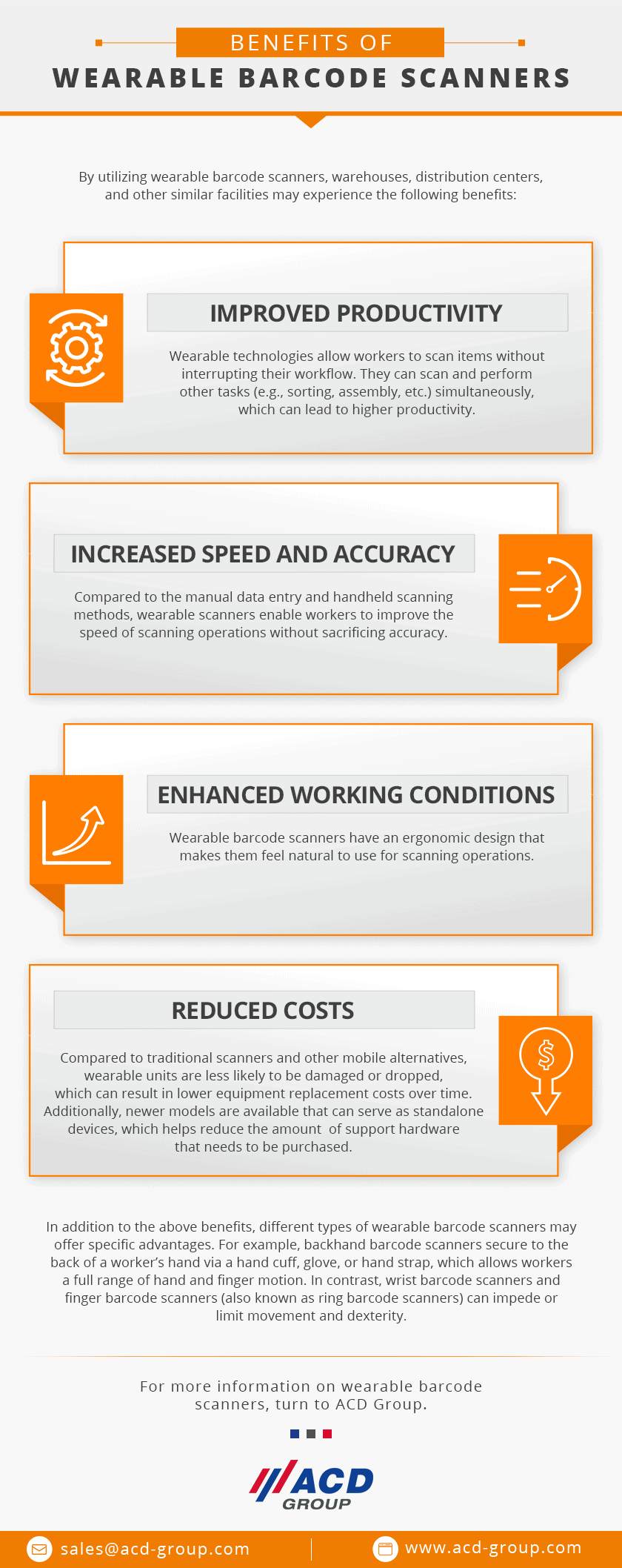
In warehouses, distribution centers, and other similar facilities, workers use barcode scanners to facilitate various logistical operations (e.g., inventory management and shipping). While some companies may utilize stationary units in certain applications, many use mobile units since they enable workers to move throughout the facility without losing connectivity or having to manage a wired system.
Mobile barcode scanners can be classified into numerous categories. Two of the most commonly used are wearable barcode scanners and handheld barcode scanners. Both have distinct advantages that make them suitable for different commercial and industrial wearable applications. For example, wearable barcode scanners are ideal for scanning operations in warehouses and fulfillment centers since they offer improved productivity, while handheld barcode scanners are better suited for more complex operations since they often have additional features and functions (e.g., inventory management software).
Below, we explore the various types of mobile barcode scanners available, outlining the benefits they offer to help readers understand which one is right for their needs.
Benefits of Wearable Barcode Scanners
By utilizing wearable barcode scanners, warehouses, distribution centers, and other similar facilities may experience the following benefits:
- Improved productivity. Wearable technologies allow workers to scan items without interrupting their workflow. They can scan and perform other tasks (e.g., sorting, assembly, etc.) simultaneously, which can lead to higher productivity.
- Increased speed and accuracy. Compared to the manual data entry and handheld scanning methods, wearable scanners enable workers to improve the speed of scanning operations without sacrificing accuracy.
- Enhanced working conditions. Wearable barcode scanners have an ergonomic design that makes them feel natural to use for scanning operations.
- Reduced costs. Compared to traditional scanners and other mobile alternatives, wearable units are less likely to be damaged or dropped, which can result in lower equipment replacement costs over time. Additionally, newer models are available that can serve as standalone devices, which helps reduce the amount of support hardware that needs to be purchased.
In addition to the above benefits, different types of wearable barcode scanners may offer specific advantages. For example, backhand barcode scanners secure to the back of a worker’s hand via a hand cuff, glove, or hand strap, which allows workers a full range of hand and finger motion. In contrast, wrist barcode scanners and finger barcode scanners (also known as ring barcode scanners) can impede or limit movement and dexterity.
Benefits of Handheld Barcode Scanners

Handheld barcode scanners generally offer different functionality than wearable units. Key features may include:
- Gun-grip for increased ergonomics
- Keypad for manual data input
- Multi-functional capabilities for support with more complex tasks than just scanning
- Integrated computer and data entry system for enhanced data management
- Compatibility with inventory management software for better logistical support
Choose Wearable Barcode Scanners and Handheld Barcode Scanners From ACD
While both wearable and handheld barcode scanners can be used in industrial and commercial scanning operations, they are suitable for different requirements. Wearable scanners are good if you need quick and accurate barcode scanning, while handheld scanners are better if you need more complex functions.
Whether you need wearable or handheld barcode scanners, the experts at ACD Group have got you covered. Our barcode scanner selection includes:
- Mobile handheld computer M260TE: a robust and intelligent scanning solution for mobile use
- Backhand scanner HasciSE: an ergonomic scanner suitable for industrial use
- Pick by Voice with Voxter Elite+: a voice-controlled scanning solution that can be complemented using HasciSE for a hands-free, eyes-free order picking methods.
To learn more about our wearable products and how they can benefit your facility, check out our wearable product catalog or contact us today.
